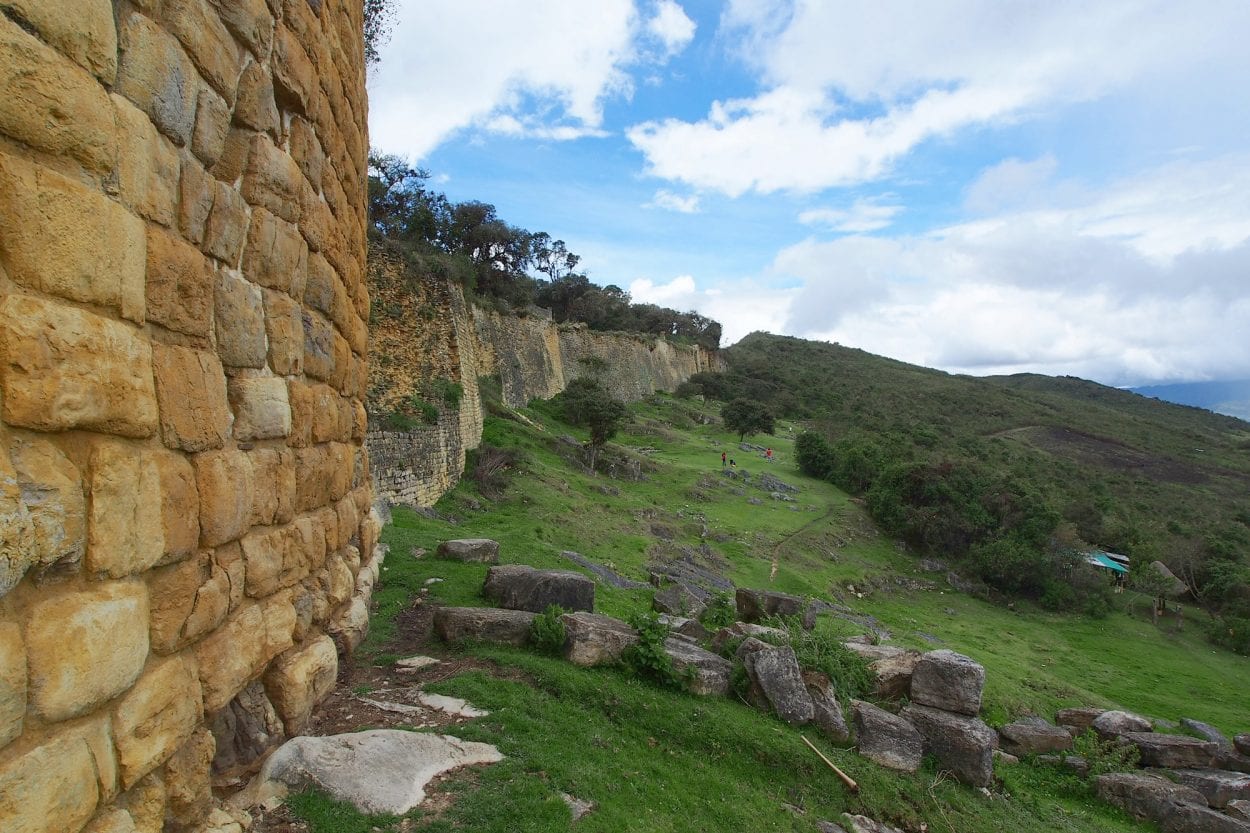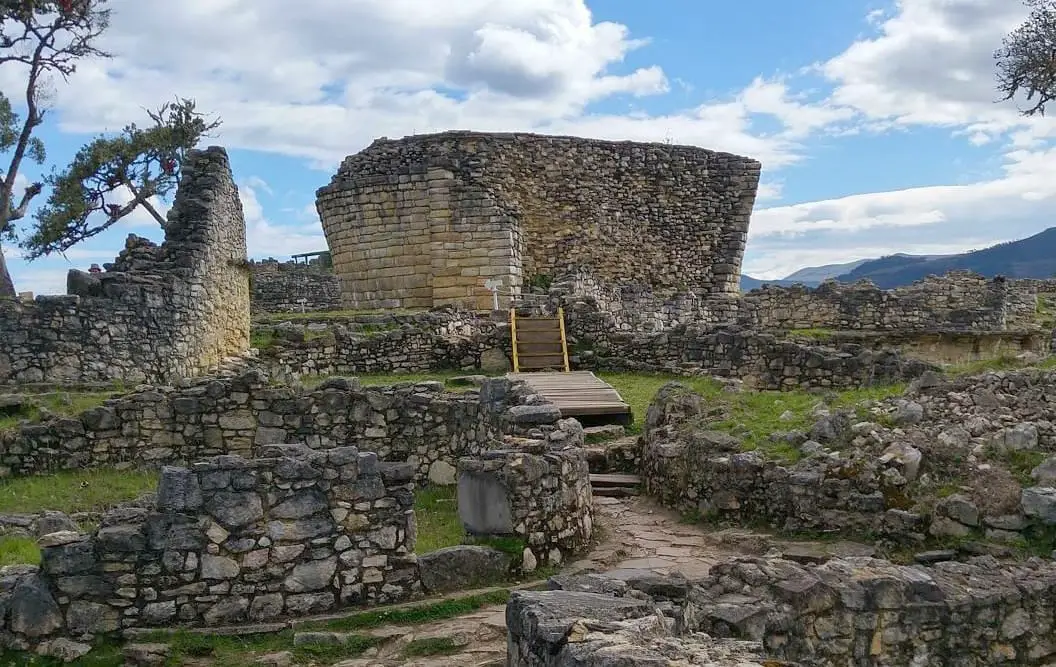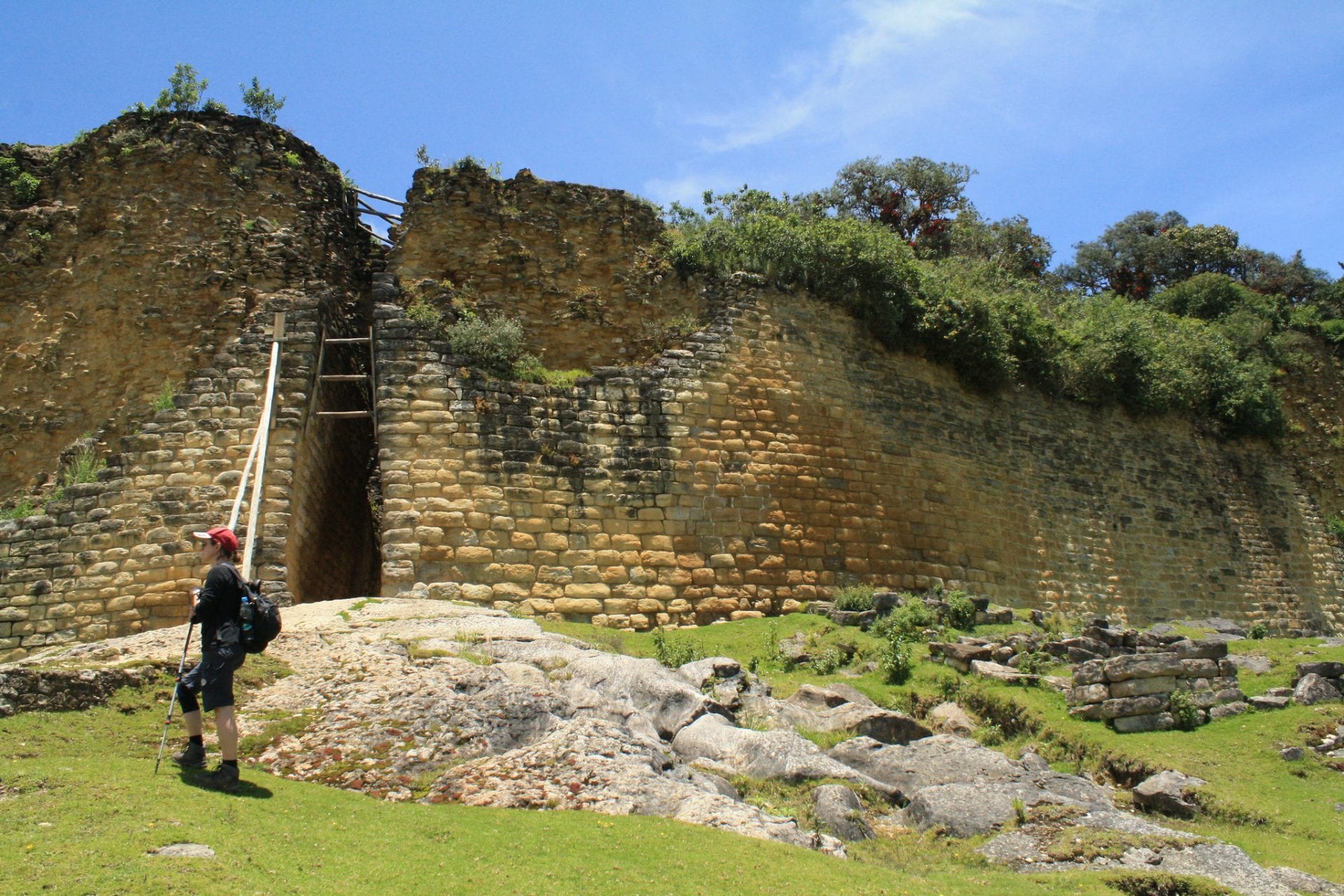Kuélap is a large pre-Columbian walled city, fortress (debated) or temple complex built by the Chachapoyas, also called the “Warriors of the Clouds”, a culture of the Andes living in the cloud forests of the southern part of the Department of Amazonas of present-day Peru.
The Chachapoya’s territory covered a triangular region formed by the confluence of the Marañón River and the Utcubamba in Bagua Province, up to the basin of the Abiseo River.
Kuélap is located on a limestone ridge 3000 metres above sea level in the mountains overlooking the Utcubamba Valley. The site was established in the 6th century AD, with the main period of construction occurring between 900 and 1100 AD.
Kuélap covers an area of 14.8 acres in a cigar or irregular trapezoid shape, built with a north-south orientation and is surrounded by limestone stone walls reaching a height of up to 20 metres. The purpose for the construction of the walls has been debated for decades amongst archaeologists, the most accepted theory is in response to raids and invasion from lowland cultures such as the southern highland Huari that were expanding their borders close to Chachapoya territory.

Archaeologists excavating Kuélap have discovered over 550 structures that rises and falls with the highland terrain, almost as if it were an extension of the hill on two levels. The lower level contains 396 circular structures and the Templo Mayor (believed to be a solar observatory) that rises to a height of 14 metres. The upper level sits on an elevated plane and contains four rectangular structures (possibly Inca), 25 circular structures and is overlooked by the Torreón, a 7-metre tower.
The Chachapoya were conquered by the Inca during the reign of Topa Inca Yupanqui, the tenth Sapa Inca during the second half of the 15th century. According to second-hand colonial records by the chronicler Garcilaso de la Vega who sourced material from a Jesuit Priest, Blas Valera (noted for being a controversial figure for accuracy in Andean studies), the Chachapoya fought against the Inca at Cuntur Marca but were overwhelmed. A second battle took place beneath the mountain of Cajamarquilla but the Chachapoya defeat was inevitable.

After conquering all the Chachapoya territory, the Inca used the mitma system of ethnic dispersion to quell any Chachapoya uprisings by forcing large numbers of Chachapoya people to resettle in remote locations of the Inca Empire. This would lead to the eventual disappearance of the Chachapoya culture and spoken language, although fragments are still spoken east of the Marañon River.
The Inca reigned over Kuélap for no more than 60 years. The Inca Empire was crumbling under the Spanish conquest and Kuélap was abandoned sometime between AD 1532-1570 until it was rediscovered in 1843 by Juan Crisóstomo Nieto, a judge from the city of Chachapoyas.
Header Image Credit : Clivid – CC BY-ND 2.0







